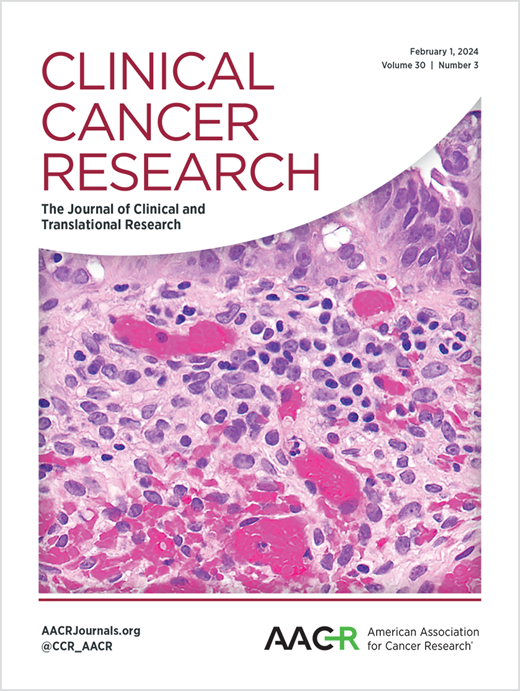Follow-Up Analysis Enhances Understanding of Molecular Residual Disease in Localized Non-Small Cell Lung Cancer
IF 10
1区 医学
Q1 ONCOLOGY
引用次数: 0
Abstract
Purpose: The prognostic value of molecular residual disease (MRD) in non-small cell lung cancer (NSCLC) is well-established, with treatment-guiding results anticipated. Here, we present updated analyses from our previous published cohort study of 261 NSCLC patients undergoing complete resection. Experimental Design: 261 patients with stage I-III lung cancer who underwent radical surgery were enrolled. Enrolled patients underwent follow-up blood draws according to the predefined time points after surgery. As of December 31st, 2023, with a median follow-up of 43.4 months, 948 postoperative blood samples were collected. Results: Landmark and longitudinal MRD exhibited positive predictive values of 91.3% and 92.8%, respectively, with a median lead times of 5.2 months. Negative predictive values were 76.5% and 93.2%, respectively. Patients with landmark undetectable MRD could not be benefited from adjuvant therapy through the updated follow-up (p=0.529). Among the 13 patients with recurrent NSCLC and longitudinal undetectable MRD, seven (53.8%) had brain-only metastases, and four (30.8%) had no updated blood samples for over six months prior to recurrence. Besides, for those with longitudinal detectable MRD, higher maximum variant allele frequency (>0.55%) and ctDNA level (>13 hGE/ml) were associated with a high risk of short-term recurrence. Additionally, updated follow-up data further support the peak time for detectable MRD was 18 months after landmark detection. Conclusions: These findings suggest the significant potential of MRD in guiding personalized treatment for NSCLC. And postoperative longitudinal undetectable MRD can indicate a cured population.求助全文
约1分钟内获得全文
求助全文
来源期刊

Clinical Cancer Research
医学-肿瘤学
CiteScore
20.10
自引率
1.70%
发文量
1207
审稿时长
2.1 months
期刊介绍:
Clinical Cancer Research is a journal focusing on groundbreaking research in cancer, specifically in the areas where the laboratory and the clinic intersect. Our primary interest lies in clinical trials that investigate novel treatments, accompanied by research on pharmacology, molecular alterations, and biomarkers that can predict response or resistance to these treatments. Furthermore, we prioritize laboratory and animal studies that explore new drugs and targeted agents with the potential to advance to clinical trials. We also encourage research on targetable mechanisms of cancer development, progression, and metastasis.
 求助内容:
求助内容: 应助结果提醒方式:
应助结果提醒方式:


